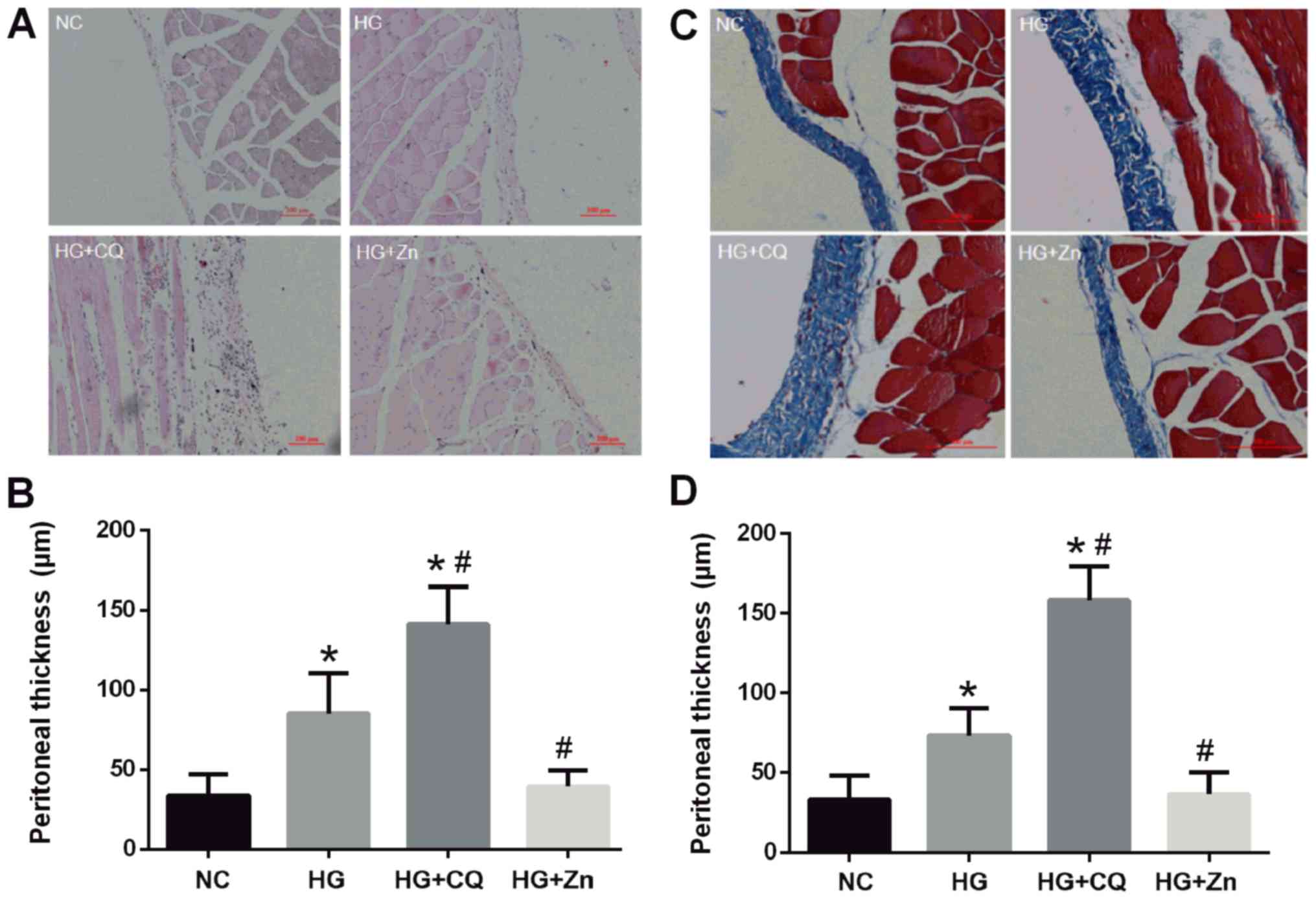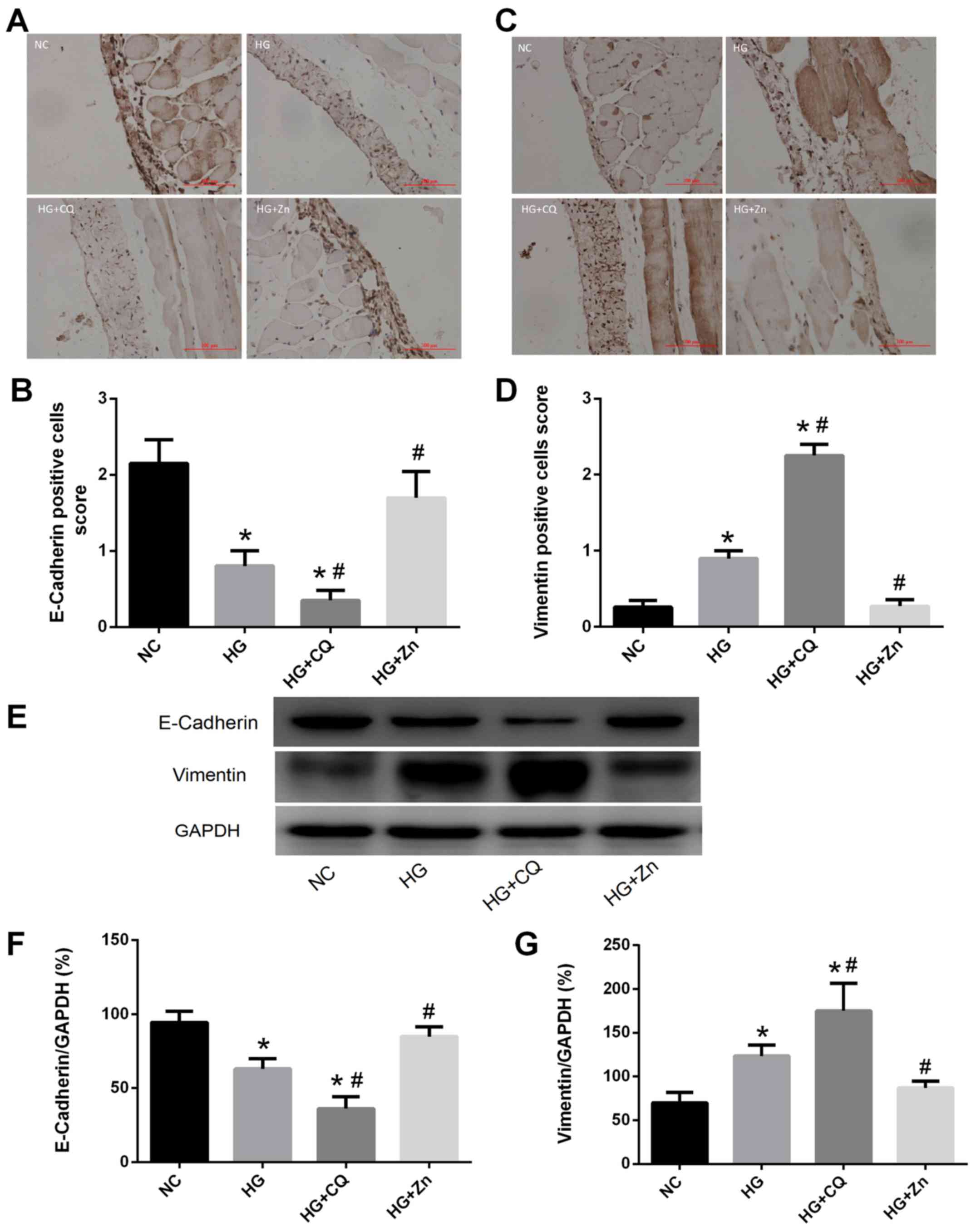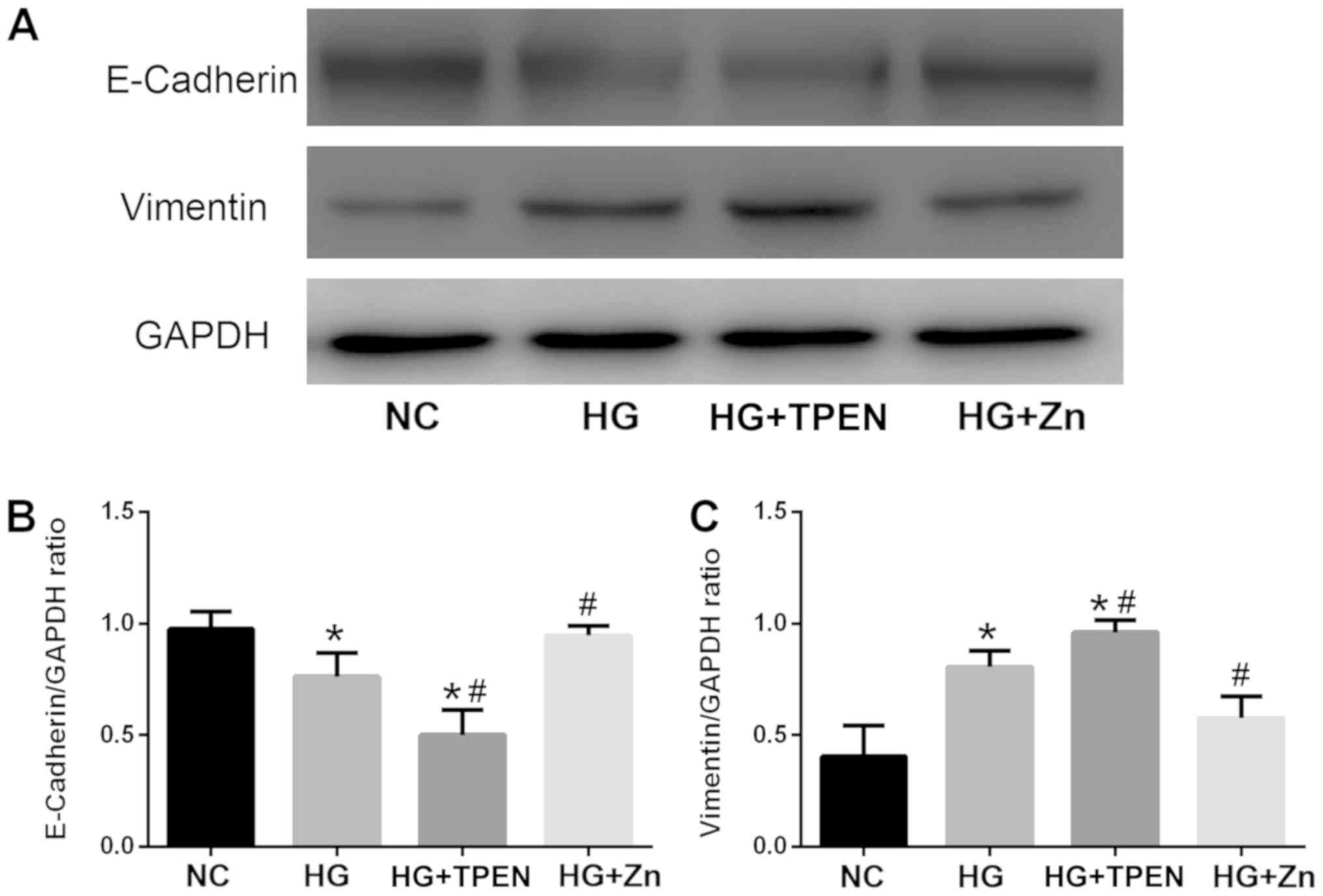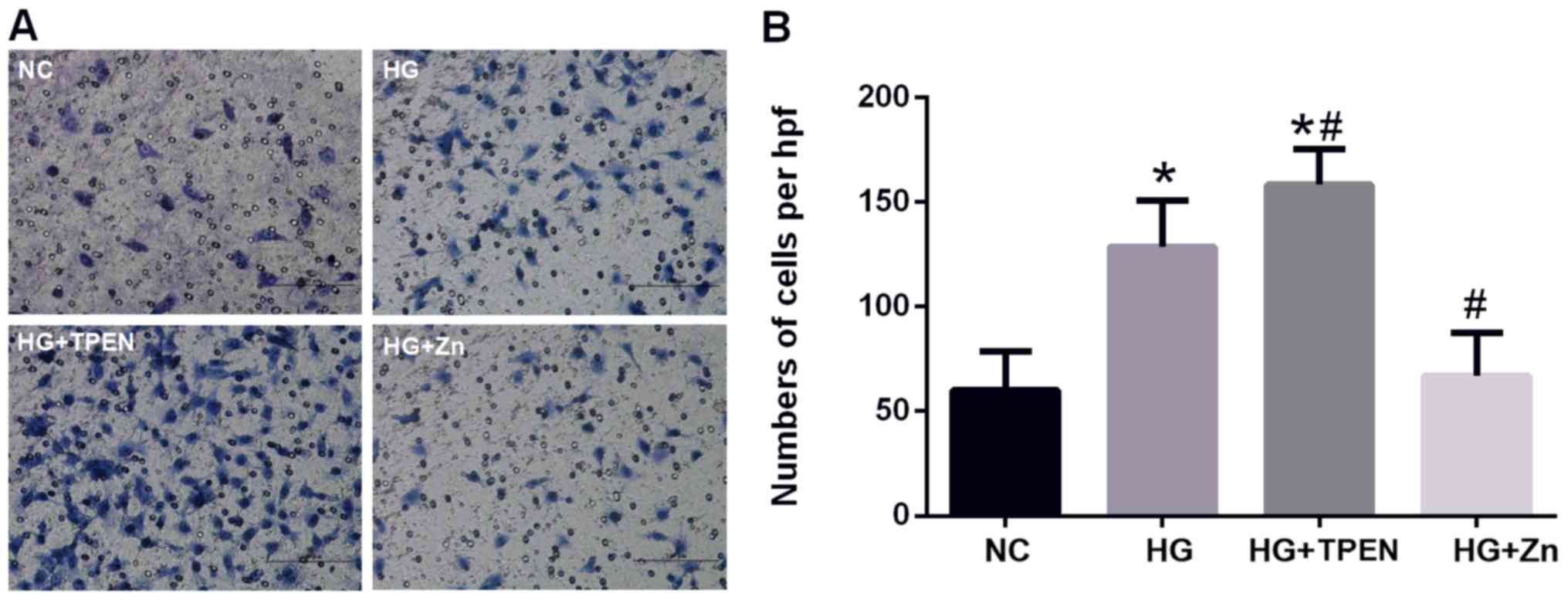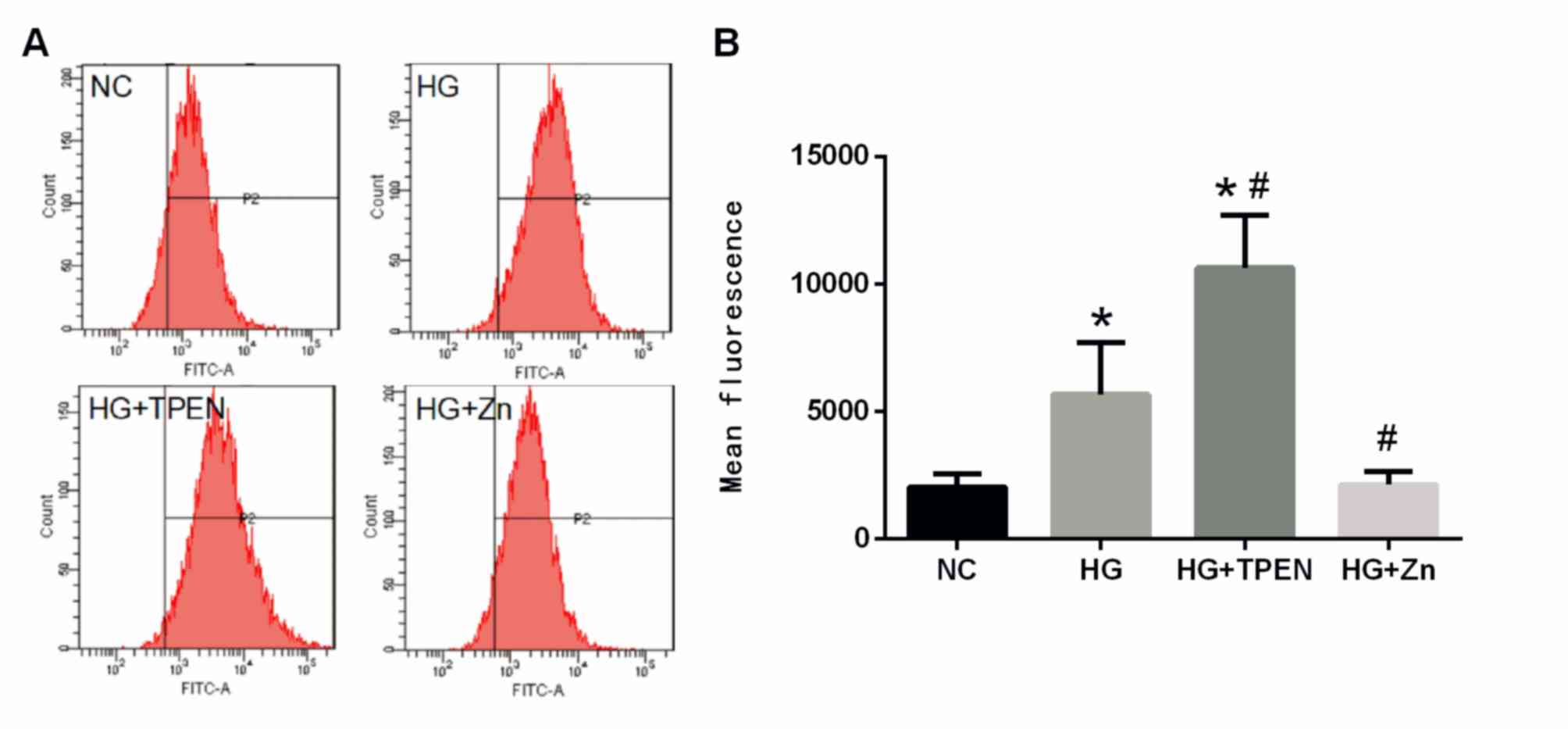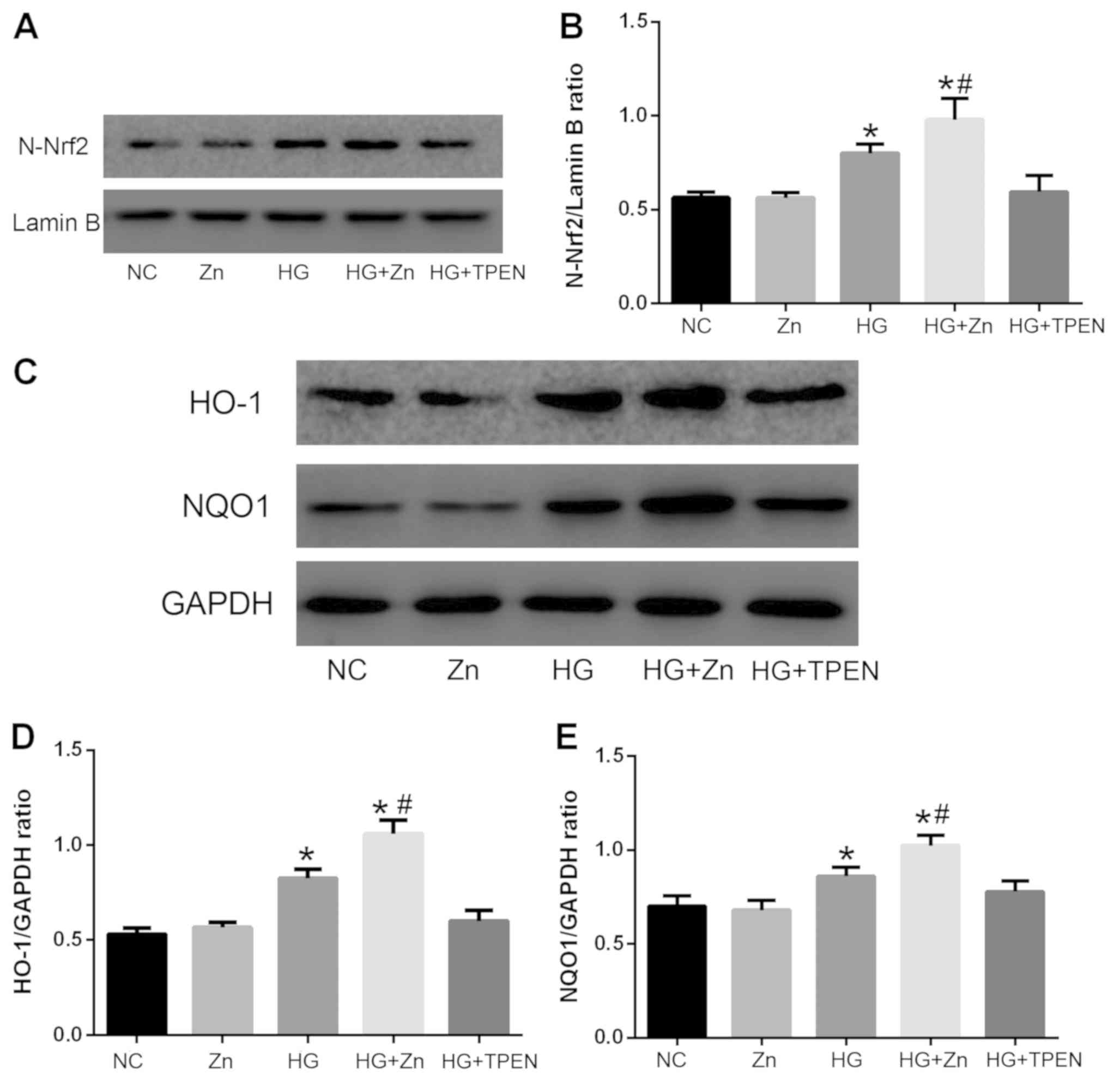|
1
|
Prasad AS: Discovery of human zinc
deficiency: Its impact on human health and diseas. Adv Nutr.
4:176–190. 2013. View Article : Google Scholar : PubMed/NCBI
|
|
2
|
Krediet RT and Struijk DG: Peritoneal
changes in patients on long-term peritoneal dialysis. Nat Rev
Nephrol. 9:419–429. 2013. View Article : Google Scholar : PubMed/NCBI
|
|
3
|
Yang CY, Chau YP, Chen A, Lee OK, Tarng DC
and Yang AH: Targeting cannabinoid signaling for peritoneal
dialysis-induced oxidative stress and fibrosis. World J Nephrol.
6:111–118. 2017. View Article : Google Scholar : PubMed/NCBI
|
|
4
|
Holmes CJ and Faict D: Peritoneal dialysis
solution biocompatibility: Definitions and evaluation strategies.
Kidney Int Suppl. S50–S56. 2003. View Article : Google Scholar : PubMed/NCBI
|
|
5
|
Yáñez-Mó M, Lara-Pezzi E, Selgas R,
Ramírez-Huesca M, Domínguez-Jiménez C, Jiménez-Heffernan JA,
Aguilera A, Sánchez-Tomero JA, Bajo MA, Alvarez V, et al:
Peritoneal dialysis and Epithelial-To-Mesenchymal transition of
mesothelial cells. N Engl J Med. 348:403–413. 2003. View Article : Google Scholar : PubMed/NCBI
|
|
6
|
Wu J, Xing C, Zhang L, Mao H, Chen X,
Liang M, Wang F, Ren H, Cui H, Jiang A, et al: Autophagy promotes
fibrosis and apoptosis in the peritoneum during long-term
peritoneal dialysis. J Cell Mol Med. 22:1190–1201. 2018.PubMed/NCBI
|
|
7
|
Kim YL: Update on mechanisms of
ultrafiltration failure. Perit Dial Int. 29 (Suppl 2):S123–S127.
2009.PubMed/NCBI
|
|
8
|
Ha H, Yu MR and Lee HB: High
glucose-induced PKC activation mediates TGF-beta 1 and fibronectin
synthesis by peritoneal mesothelial cells. Kidney Int. 59:463–470.
2001. View Article : Google Scholar : PubMed/NCBI
|
|
9
|
Yao Q, Pawlaczyk K, Ayala ER, Styszynski
A, Breborowicz A, Heimburger O, Qian JQ, Stenvinkel P, Lindholm B
and Axelsson J: The role of the TGF/Smad signaling pathway in
peritoneal fibrosis induced by peritoneal dialysis solutions.
Nephron Exp Nephrol. 109:e71–e78. 2008. View Article : Google Scholar : PubMed/NCBI
|
|
10
|
Ksiazek K, Breborowicz A, Jorres A and
Witowski J: Oxidative stress contributes to accelerated development
of the senescent phenotype in human peritoneal mesothelial cells
exposed to high glucose. Free Radic Biol Med. 42:636–641. 2007.
View Article : Google Scholar : PubMed/NCBI
|
|
11
|
Noh H, Kim JS, Han KH, Lee GT, Song JS,
Chung SH, Jeon JS, Ha H and Lee HB: Oxidative stress during
peritoneal dialysis: Implications in functional and structural
changes in the membrane. Kidney Int. 69:2022–2028. 2006. View Article : Google Scholar : PubMed/NCBI
|
|
12
|
Wellinghausen N and Rink L: The
significance of zinc for leukocyte biology. J Leukoc Biol.
64:571–577. 1998. View Article : Google Scholar : PubMed/NCBI
|
|
13
|
Beyersmann D and Haase H: Functions of
zinc in signaling, proliferation and differentiation of mammalian
cells. Biometals. 14:331–341. 2001. View Article : Google Scholar : PubMed/NCBI
|
|
14
|
Cousins RJ, Blanchard RK, Moore JB, Cui L,
Green CL, Liuzzi JP, Cao J and Bobo JA: Regulation of zinc
metabolism and genomic outcomes. J Nutr. 133 (Suppl 1):1521S–1526S.
2003. View Article : Google Scholar : PubMed/NCBI
|
|
15
|
Honscheid A, Rink L and Haase H:
T-lymphocytes: A target for stimulatory and inhibitory effects of
zinc ions. Endocr Metab Immune Disord Drug Targets. 9:132–144.
2009. View Article : Google Scholar : PubMed/NCBI
|
|
16
|
Takahashi M, Saito H, Higashimoto M and
Hibi T: Possible inhibitory effect of oral zinc supplementation on
hepatic fibrosis through downregulation of TIMP-1: A pilot study.
Hepatol Res. 37:405–409. 2007. View Article : Google Scholar : PubMed/NCBI
|
|
17
|
Wang L, Zhou Z, Saari JT and Kang YJ:
Alcohol-induced myocardial fibrosis in metallothionein-null mice:
Prevention by zinc supplementation. Am J Pathol. 167:337–344. 2005.
View Article : Google Scholar : PubMed/NCBI
|
|
18
|
Gandhi MS, Deshmukh PA, Kamalov G, Zhao T,
Zhao W, Whaley JT, Tichy JR, Bhattacharya SK, Ahokas RA and Sun Y:
Causes and consequences of zinc dyshomeostasis in rats with chronic
aldosteronism. J Cardiovasc Pharmacol. 52:245–252. 2008. View Article : Google Scholar : PubMed/NCBI
|
|
19
|
Van Biervliet S, Vande Velde S, Van
Biervliet JP and Robberecht E: The effect of zinc supplements in
cystic fibrosis patients. Ann Nutr Metab. 52:152–156. 2008.
View Article : Google Scholar : PubMed/NCBI
|
|
20
|
Zhang X, Wang J, Fan Y, Yang L, Wang L and
Ma J: Zinc supplementation attenuates high glucose-induced
epithelial-to-mesenchymal transition of peritoneal mesothelial
cells. Biol Trace Elem Res. 150:229–235. 2012. View Article : Google Scholar : PubMed/NCBI
|
|
21
|
Duman S, Sen S, Gunal AI, Asci G, Akcicek
F and Basci A: How can we standardize peritoneal thickness
measurements in experimental studies in rats? Perit Dial Int. 21
(Suppl 3):S338–S341. 2001.PubMed/NCBI
|
|
22
|
Rougier JP, Moullier P, Piedagnel R and
Ronco PM: Hyperosmolality suppresses but TGF beta 1 increases MMP9
in human peritoneal mesothelial cells. Kidney Int. 51:337–347.
1997. View Article : Google Scholar : PubMed/NCBI
|
|
23
|
Zhang X, Liang D, Guo B, Sun L, Chi ZH,
Cai Y, Wang L and Ma J: Zinc transporter 7 induced by high glucose
attenuates epithelial-to-mesenchymal transition of peritoneal
mesothelial cells. Biol Trace Elem Res. 151:138–147. 2013.
View Article : Google Scholar : PubMed/NCBI
|
|
24
|
Zhang X, Liang D, Guo B, Yang L, Wang L
and Ma J: Zinc inhibits high glucose-induced apoptosis in
peritoneal mesothelial cells. Biol Trace Elem Res. 150:424–432.
2012. View Article : Google Scholar : PubMed/NCBI
|
|
25
|
Xiang S, Li M, Xie X, Xie Z, Zhou Q, Tian
Y, Lin W, Zhang X, Jiang H, Shou Z and Chen J: Rapamycin inhibits
epithelial-to-mesenchymal transition of peritoneal mesothelium
cells through regulation of Rho GTPases. FEBS J. 283:2309–2325.
2016. View Article : Google Scholar : PubMed/NCBI
|
|
26
|
Thiery JP and Sleeman JP: Complex networks
orchestrate epithelial-mesenchymal transitions. Nat Rev Mol Cell
Biol. 7:131–142. 2006. View
Article : Google Scholar : PubMed/NCBI
|
|
27
|
Kovac S, Angelova PR, Holmstrom KM, Zhang
Y, Dinkova-Kostova AT and Abramov AY: Nrf2 regulates ROS production
by mitochondria and NADPH oxidase. Biochim Biophys Acta.
1850:794–801. 2015. View Article : Google Scholar : PubMed/NCBI
|
|
28
|
Kanlaya R, Khamchun S, Kapincharanon C and
Thongboonkerd V: Protective effect of epigallocatechin-3-gallate
(EGCG) via Nrf2 pathway against oxalate-induced epithelial
mesenchymal transition (EMT) of renal tubular cells. Sci Rep.
6:302332016. View Article : Google Scholar : PubMed/NCBI
|
|
29
|
Oyama TM, Ishida S, Okano Y, Seo H and
Oyama Y: Clioquinol-induced increase and decrease in the
intracellular Zn2+ level in rat thymocytes. Life Sci. 91:1216–1220.
2012. View Article : Google Scholar : PubMed/NCBI
|
|
30
|
Priel T, Aricha-Tamir B and Sekler I:
Clioquinol attenuates zinc-dependent beta-cell death and the onset
of insulitis and hyperglycemia associated with experimental type I
diabetes in mice. Eur J Pharmacol. 565:232–239. 2007. View Article : Google Scholar : PubMed/NCBI
|
|
31
|
Kim JH, Jang BG, Choi BY, Kwon LM, Sohn M,
Song HK and Suh SW: Zinc chelation reduces hippocampal neurogenesis
after pilocarpine-induced seizure. PLoS One. 7:E485432012.
View Article : Google Scholar : PubMed/NCBI
|
|
32
|
Nitzan YB, Sekler I, Frederickson CJ,
Coulter DA, Balaji RV, Liang SL, Margulis A, Hershfinkel M and
Silverman WF: Clioquinol effects on tissue chelatable zinc in mice.
J Mol Med (Berl). 81:637–464. 2003. View Article : Google Scholar : PubMed/NCBI
|
|
33
|
Wang T, Wang CY, Shan ZY, Teng WP and Wang
ZY: Clioquinol reduces zinc accumulation in neuritic plaques and
inhibits the amyloidogenic pathway in AβPP/PS1 transgenic mouse
brain. J Alzheimers Dis. 29:549–559. 2012. View Article : Google Scholar : PubMed/NCBI
|
|
34
|
Cherny RA, Atwood CS, Xilinas ME, Gray DN,
Jones WD, McLean CA, Barnham KJ, Volitakis I, Fraser FW, Kim Y, et
al: Treatment with a copper-zinc chelator markedly and rapidly
inhibits beta-amyloid accumulation in Alzheimer's disease
transgenic mice. Neuron. 30:665–676. 2001. View Article : Google Scholar : PubMed/NCBI
|
|
35
|
Kang M, Zhao L, Ren M, Deng M and Li C:
Reduced metallothionein expression induced by Zinc deficiency
results in apoptosis in hepatic stellate cell line LX-2. Int J Clin
Exp Med. 8:20603–20609. 2015.PubMed/NCBI
|
|
36
|
Yang H, Keen CL and Lanoue L: Influence of
intracellular zinc on cultures of rat cardiac neural crest cells.
Birth Defects Res B Dev Reprod Toxicol. 104:11–22. 2015. View Article : Google Scholar : PubMed/NCBI
|
|
37
|
Lopez-Cabrera M: Mesenchymal conversion of
mesothelial cells is a key event in the pathophysiology of the
peritoneum during peritoneal dialysis. Adv Med. 2014:4731342014.
View Article : Google Scholar : PubMed/NCBI
|
|
38
|
Liu J, Zeng L, Zhao Y, Zhu B, Ren W and Wu
C: Selenium suppresses lipopolysaccharide-induced fibrosis in
peritoneal mesothelial cells through inhibition of
epithelial-to-mesenchymal transition. Biol Trace Elem Res.
161:202–209. 2014. View Article : Google Scholar : PubMed/NCBI
|
|
39
|
Strippoli R, Moreno-Vicente R, Battistelli
C, Cicchini C, Noce V, Amicone L, Marchetti A, Del Pozo MA and
Tripodi M: Molecular mechanisms underlying peritoneal EMT and
fibrosis. Stem Cells Int. 2016:35436782016. View Article : Google Scholar : PubMed/NCBI
|
|
40
|
Lee JM, Dedhar S, Kalluri R and Thompson
EW: The epithelial-mesenchymal transition: New insights in
signaling, development, and disease. J Cell Biol. 172:973–981.
2006. View Article : Google Scholar : PubMed/NCBI
|
|
41
|
Kalluri R and Weinberg RA: The basics of
epithelial-mesenchymal transition. J Clin Invest. 119:1420–1428.
2009. View Article : Google Scholar : PubMed/NCBI
|
|
42
|
Aroeira LS, Aguilera A, Sanchez-Tomero JA,
Bajo MA, del Peso G, Jimenez-Heffernan JA, Selgas R and
Lopez-Cabrera M: Epithelial to mesenchymal transition and
peritoneal membrane failure in peritoneal dialysis patients:
Pathologic significance and potential therapeutic interventions. J
Am Soc Nephrol. 18:2004–2013. 2004. View Article : Google Scholar
|
|
43
|
Hsieh HL, Chi PL, Lin CC, Yang CC and Yang
CM: Up-regulation of ROS-dependent matrix metalloproteinase-9 from
high-glucose-challenged astrocytes contributes to the neuronal
apoptosis. Mol Neurobiol. 50:520–533. 2014. View Article : Google Scholar : PubMed/NCBI
|
|
44
|
Lee HB, Yu MR, Song JS and Ha H: Reactive
oxygen species amplify protein kinase C signaling in high
glucose-induced fibronectin expression by human peritoneal
mesothelial cells. Kidney Int. 65:1170–1179. 2004. View Article : Google Scholar : PubMed/NCBI
|
|
45
|
Oteiza PI, Olin KL, Fraga CG and Keen CL:
Zinc deficiency causes oxidative damage to proteins, lipids and DNA
in rat testes. J Nutr. 125:823–829. 1995.PubMed/NCBI
|
|
46
|
Ho E and Ames BN: Low intracellular zinc
induces oxidative DNA damage, disrupts p53, NFkappa B, and AP1 DNA
binding, and affects DNA repair in a rat glioma cell line. Proc
Natl Acad Sci USA. 99:16770–16775. 2002. View Article : Google Scholar : PubMed/NCBI
|
|
47
|
Prasad AS: Clinical, immunological,
anti-inflammatory and antioxidant roles of zinc. Exp Gerontol.
43:370–377. 2008. View Article : Google Scholar : PubMed/NCBI
|
|
48
|
Bao B, Prasad AS, Beck FW, Snell D, Suneja
A, Sarkar FH, Doshi N, Fitzgerald JT and Swerdlow P: Zinc
supplementation decreases oxidative stress, incidence of infection,
and generation of inflammatory cytokines in sickle cell disease
patients. Transl Res. 152:67–80. 2008. View Article : Google Scholar : PubMed/NCBI
|
|
49
|
Taguchi K, Motohashi H and Yamamoto M:
Molecular mechanisms of the Keap1-Nrf2 pathway in stress response
and cancer evolution. Genes Cells. 16:123–140. 2011. View Article : Google Scholar : PubMed/NCBI
|
|
50
|
McMahon M, Lamont DJ, Beattie KA and Hayes
JD: Keap1 perceives stress via three sensors for the endogenous
signaling molecules nitric oxide, zinc, and alkenals. Proc Natl
Acad Sci USA. 107:18838–18843. 2010. View Article : Google Scholar : PubMed/NCBI
|
|
51
|
Wang R, Paul VJ and Luesch H: Seaweed
extracts and unsaturated fatty acid constituents from the green
alga Ulva lactuca as activators of the cytoprotective Nrf2-ARE
pathway. Free Radic Biol Med. 57:141–153. 2013. View Article : Google Scholar : PubMed/NCBI
|
|
52
|
Kim HJ and Vaziri ND: Contribution of
impaired Nrf2-Keap1 pathway to oxidative stress and inflammation in
chronic renal failure. Am J Physiol Renal Physiol. 298:F662–F671.
2010. View Article : Google Scholar : PubMed/NCBI
|




